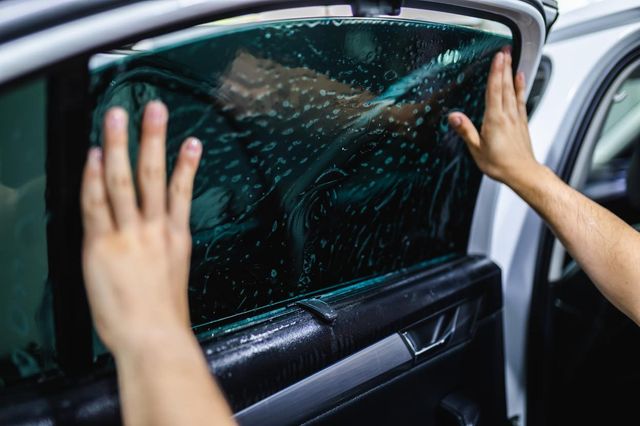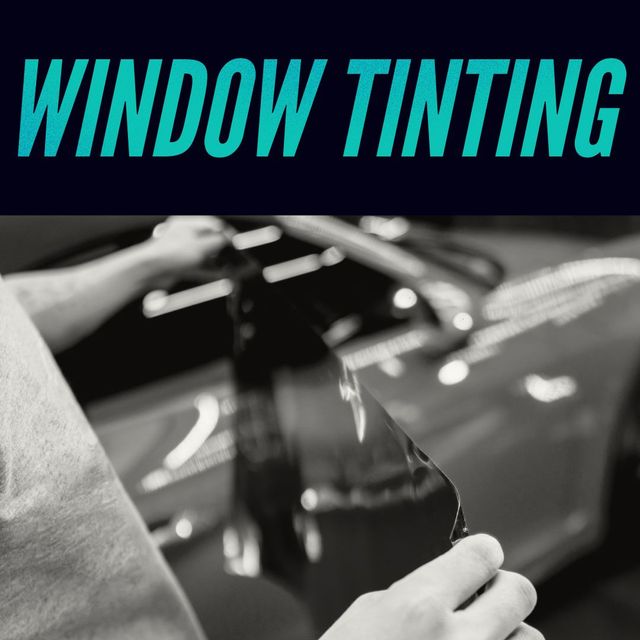How Vehicle Window Tinting Maintains Your Lorry Cool in Heat
How Vehicle Window Tinting Maintains Your Lorry Cool in Heat
Blog Article
Home Window Tinting Laws and Guidelines: What You Need to Know Prior To Tinting Your Cars And Truck
Prior to proceeding with home window tinting for your lorry, it is vital to acquaint on your own with the varied regulations and guidelines that control this technique across different states. These regulations dictate the allowable levels of color darkness, commonly measured by visible light transmission (VLT) percentages, and consist of certain stipulations for front windscreens focused on making certain roadway safety and security. Additionally, certain territories may supply clinical exemptions for people with certifying conditions. Understanding these intricacies can conserve you from prospective lawful ramifications, yet what are the particular rules in your state?
Overview of Window Tinting Laws
Home window tinting regulations are frequently based on variation across various jurisdictions, showing neighborhood guidelines and safety factors to consider. These laws dictate the allowable levels of color darkness and reflectiveness on car home windows, making sure that vehicle drivers maintain ample visibility while additionally safeguarding against harmful UV rays and warmth.
Most regulations classify window tinting based on the Visible Light Transmission (VLT) portion, which shows the quantity of light that can pass through the window. Typically, reduced VLT percentages signify darker colors. Regulations usually set apart between the front, side, and back windows, with stricter limitations related to the front windshield to enhance security for both the vehicle driver and other road customers.
Conformity with window tinting policies is essential, as violations can result in penalties, obligatory removal of the tint, and potential boosts in insurance coverage premiums. It is vital for automobile proprietors to acquaint themselves with neighborhood legislations prior to proceeding with home window tinting installments.
State-by-State Color Rules
Recognizing the particular window tinting policies in each state is essential for vehicle owners looking for to abide by the law. Each state in the U.S. has actually established its own set of guidelines governing home window tinting, which can vary dramatically. These policies typically dictate the permitted levels of tint darkness, the kinds of home windows that can be tinted, and any kind of medical exceptions that may use.
For example, states like California have stringent restrictions on tint darkness for front home windows, while others, such as New Mexico, may enable darker colors. Additionally, specific states mandate particular presence percentages for various home windows, including the windscreen, front side home windows, and back windows. It is vital for cars and truck owners to familiarize themselves with their state's laws to stay clear of possible penalties or charges.
Furthermore, some states might call for a certification sticker label to be put on colored windows, suggesting conformity with state laws. Failing to stick to these policies not only runs the risk of legal repercussions but can additionally impact security and presence while driving. Consequently, vehicle proprietors ought to carry out extensive research or consult regional authorities to ensure full understanding and compliance with state-by-state color policies.
Allowed Tint Levels and Kinds
Several vehicle proprietors may be stunned to discover that permitted tint levels and kinds vary commonly throughout different states. Each state has established its own laws pertaining to the allowable darkness and reflectivity of window color, often determined by Visible Light Transmission (VLT) percents. VLT refers to the amount of light that can pass via the colored windows; hence, a reduced portion shows a darker tint.

Moreover, the sorts of tint products permitted can vary, with some states forbiding metal or mirror-like coatings. It is crucial for automobile proprietors to acquaint themselves with their state's certain legislations to make certain compliance. Non-compliance can lead to fines, necessary elimination of the tint, or various other lawful repercussions, making it vital to understand these laws before proceeding with setup.
Medical Exceptions for Tinting
While not all states supply allocations for medical exemptions pertaining to window tinting, those that do identify the need for certain people to enhance exposure and comfort as a result of clinical conditions. Different clinical conditions, such as lupus, skin cancer, and certain eye conditions, can render people specifically delicate to sunlight. As a result, these individuals may require darker colors to shield themselves from hazardous UV rays and glow.

It is essential to keep in mind that even with a clinical exception, there may still be restrictions on the level of tint enabled. Compliance with state legislations guarantees that people are both protected and within legal limits. Those considering medical exceptions ought to contact their local Division of Motor Vehicles or comparable authority to recognize the procedures and needs required to request an exception successfully.
Penalties for Non-Compliance
Stopping working to follow home window tinting laws can cause considerable fines, which vary by state. Law enforcement agencies are empowered to provide citations for automobiles that do not comply with the specified tinting policies. These fines typically include fines, which can vary from small quantities to several hundred dollars, relying on the severity of the offense and the state in question.
In some territories, duplicated offenses might cause escalating penalties or added fines, such as mandatory court looks. Non-compliance may require the removal of prohibited tinting, often at the proprietor's expenditure. In severe cases, regular transgressors might encounter suspension of their lorry enrollment till compliance is achieved.
In addition, insurance ramifications may arise from getting numerous citations for window tint violations. Insurance providers may see such violations as a sign of riskier behavior, possibly resulting in increased premiums or difficulty in coverage.
To prevent these charges, it is critical for lorry proprietors to familiarize themselves with their neighborhood window tinting legislations and guarantee that their lorry complies (Window Tinting). This proactive method not only avoids lawful ramifications yet additionally advertises roadway safety and security
Final Thought

Many laws classify window tinting based on the Visible Light Transmission (VLT) percentage, which shows the amount of light that can pass via the window. Conformity with window tinting guidelines is crucial, as offenses can result in penalties, required removal of the color, and potential increases in insurance policy costs.Comprehending the details window tinting regulations in each state is essential for automobile owners seeking to abide with the regulation. These regulations usually determine the allowed levels of color darkness, the kinds of home windows that can be tinted, and any kind of clinical exceptions that may use.
For circumstances, states like The golden state have stringent limitations on tint darkness for front home windows, while others, such as New Mexico, may allow darker colors.
Report this page